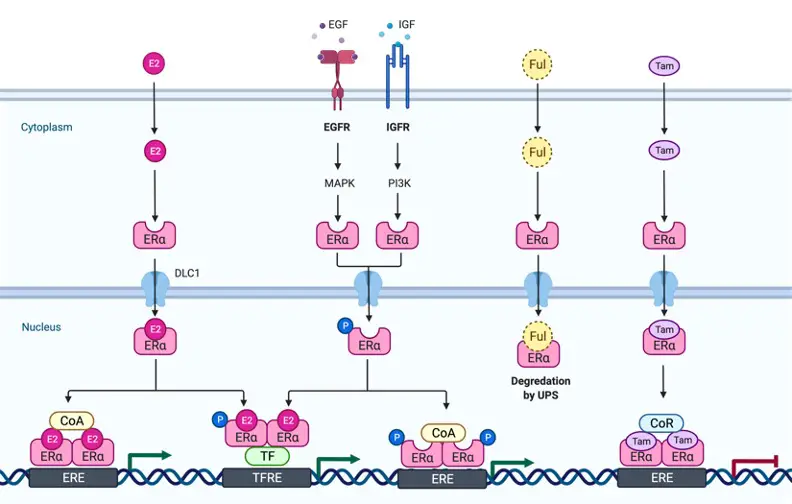Table of Contents
Estradiol Definition
Estradiol is a powerful estrogen with the molecular formula C18H24O2; a key female sex hormone in that it is largely involved in the control of the estrous and menstrual reproductive cycles in females.
What is Estradiol?
One of the most important endogenous estrogens in humans and other animals is estradiol (E2). Estrone (E1), estriol (E3), and estetrol (E4) are the other endogenous estrogens (E4). Estradiol has the chemical formula C18H24O2 and is an estrogenic hormone.

Estradiol is naturally generated in the gonads, as well as the adrenal cortex and perhaps other organs. Estradiol is mostly generated in the ovary’s developing Graafian follicle in females. During pregnancy, it is also generated in the placental tissues. As the first metabolite, cholesterol is used in the production of estradiol. Androstenedione is produced by a series of enzymatic processes.
The aromatase enzyme catalyzes the conversion of androstenedione to estrone. Through the action of the enzyme 17β-hydroxysteroid dehydrogenase, estrone is reversibly converted to estradiol. This can happen in a variety of organs, including the liver, mammary glands, and uterus.
Apart from estrogen, testosterone may also be aromatized and transformed to estradiol. The process, which incorporates the enzyme aromatase, which catalyzes the conversion of testosterone to estradiol, is irreversible. Estradiol is the most important female sex hormone. It has a role in the development of secondary sexual traits in women. It helps to broaden the hips, grow the breasts, and so on.
In females, it also plays a role in the control of the estrous and monthly reproductive cycles. It encourages the growth and thickening of cells and blood vessels in the endometrium, for example. Estradiol also has a role in the development and maintenance of female reproductive structures such as the uterus and mammary glands. Males generate estradiol as well.
Males, on the other hand, have a smaller amount than females. Estradiol is primarily generated by the testis’ Leydig cells. Sertoli cells and other germ cells, as well as the brain, liver, bone, and adipose tissues, may generate it. Estradiol is implicated in the mediation of pubertal growth spurt and epiphyseal closure in both males and females.
Estradiol is reported to be produced by a variety of crustaceans, insects, and other organisms in addition to vertebrates. To reach target cells, estradiols are released into the circulation. Estradiol binds tightly to estrogen receptors inside the target cell. Estradiol is the most potent agonist for estrogen receptors ERα and ERβ. Certain genes are transcribed and expressed as a result of the binding.
Synthetic estradiol is also available. It may be extracted from pregnant women’s urine or ergosterol. It is used as a medicine to fix estrogen levels in individuals with estrogen insufficiency in its commercial version. It’s also used to kill cancerous cells of the breast.
Estradiol Citations
- Estradiol: A Steroid with Multiple Facets. Horm Metab Res . 2018 May;50(5):359-374.
- Estradiol therapy and breast cancer risk in perimenopausal and postmenopausal women: a systematic review and meta-analysis. Gynecol Endocrinol . 2017 Feb;33(2):87-92.
- Estradiol and cognitive function: past, present and future. Horm Behav . 2014 Sep;66(4):602-18.
- Figures are created with BioRender.com







